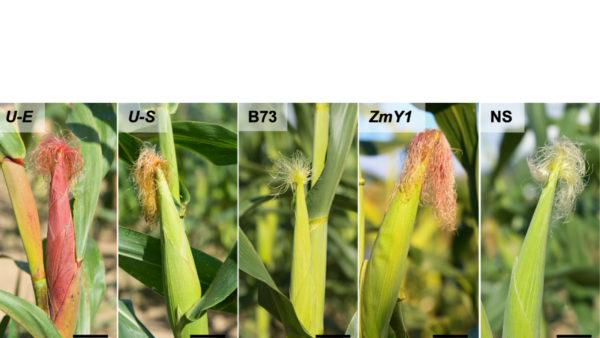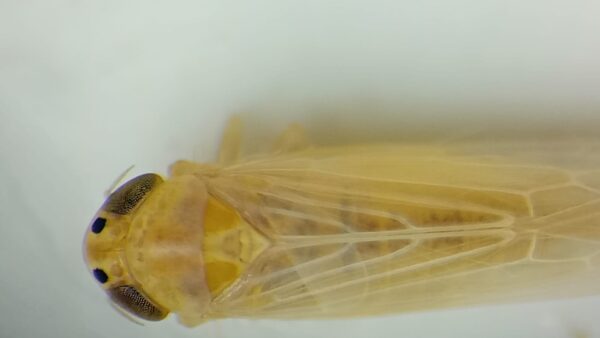An important new resource is available to help stakeholders in the seed industry spread the good news about glyphosate.
“Some Good News About Glyphosate” is a seven-page document showing how Ontario has benefitted tremendously from the use of the herbicide commonly sold under the trade name Roundup. Authors Rob Saik and Christopher P. Dufault used data from the Ontario Ministry of Agriculture, Food and Rural Affairs that tracks trends in pesticide use over time.
“Activists always equate GMO to more chemical. That’s not true for Bt and not true for glyphosate- and glufosinate-tolerant crops,” says Saik, an agrologist and founder of Agri-Trend (now Trimble), which helps farmers allocate scarce resources to produce profitable and environmentally sustainable crops.

“I want the ag community to be able to say, ‘Here’s solid data to give you a counterpoint to all the negativity you’re reading about.'”
For Saik, that “negativity” includes the 2015 report from the World Health Organization’s International Agency for Research on Cancer (IARC), which labelled glyphosate as a Group 2A substance (probably carcinogenic to humans). The IARC report was widely criticized as flawed — Saik and Dufault’s document notes numerous regulatory bodies throughout the world, including Europe, Canada and the United States, all take the position that glyphosate does not pose a cancer risk to humans.
But that didn’t stop the IARC report from dominating headlines throughout the world, and the resulting storm of negative publicity surrounding glyphosate tolerant crops and the herbicide itself spurred Saik and Dufault — a retired pesticide regulator who spent two decades with the Pest Management Regulatory Agency and now works as a consultant — to write “Some Good News About Glyphosate” in the hopes of showing how beneficial a technology it has been.
“As I dug into the numbers more and more, I was intrigued to see the trends we outlined in the document about how total herbicide use declined in Ontario in lockstep with increased glyphosate usage,” he says.
For Dufault, the report’s conclusions are clear and encouraging: while both corn/soybean acreage and yield have increased in Ontario since 1983, the overall environmental impact of herbicide use per acre has declined in large part because glyphosate has displaced other more harmful major herbicide chemistries.
[tweetshare tweet=”I want the ag community to be able to say, ‘Here’s solid data to give you a counterpoint to all the negativity you’re reading about.'” Rob Saik on a new document showing the benefits of glyphosate.” username=”germinationmag”]
This reduction in risk is due to glyphosate being less hazardous compared with these other herbicides, and glyphosate being applied at a lower rate.
Glyphosate has played a key role in enabling many farmers to achieve excellent weed control in herbicide-tolerant crops while adopting reduced or zero tillage, the authors note. This reduction in cultivation has positive implications for the environment in terms of soil health, water holding capacity and greenhouse gas balance.

Dufault says he hopes to see the report used as a tool for informing both regulators and the general public about the value of glyphosate and its associated technologies — and also the value of taking the time to dig through data to recognize important trends that can be used to create sensible policy.
“Having worked on the regulatory side, I have great confidence in our regulatory authorities in Canada and the U.S. to come up with fair assessments that look at the whole picture, and ultimately do what’s best for society,” Dufault says.
The Good News About Glyphosate in Ontario: What the Numbers Show
39% Between 1983 and 2013, the total amount of herbicide used in field corn in Ontario declined by this much. This is primarily due to the increased use of glyphosate, which is applied at a lower rate of active ingredient per acre than the herbicides it replaced, increasing from 1% to 54% of the amount of all herbicides applied to field corn during that period. The decline in the total amount of herbicide applied occurred despite an 11% increase in the area grown to field corn.
74% In that same 30-year period, the yield per acre of field corn increased by this amount — and due to a combination of the reduced amount of herbicide applied per acre and increased yield, the amount of all herbicides applied per bushel produced declined by a whopping 70%.
188% Between 1983 and 2013, the acreage of soybean grown in Ontario increased by this much. The total amount of herbicide applied increased by just 47%. As with field corn, this is largely due to the replacement, by glyphosate, of other higher-rate herbicides; usage of glyphosate increased from 2% to 82% of all herbicides applied to soybeans during that timeframe.
53% Within that 30-year period, the yield of soybean increased by this much. And the amount of all herbicides applied per bushel produced? This declined by an impressive 67%. You guessed it — due largely to the use of glyphosate.
—Source: Some Good News About Glyphosate
HOW CAN I GET A COPY OF THE REPORT?
Visit Rob Saik’s website and download it at https://rsaik.wordpress.com/2018/08/29/some-good-news-about-glyphosate/












